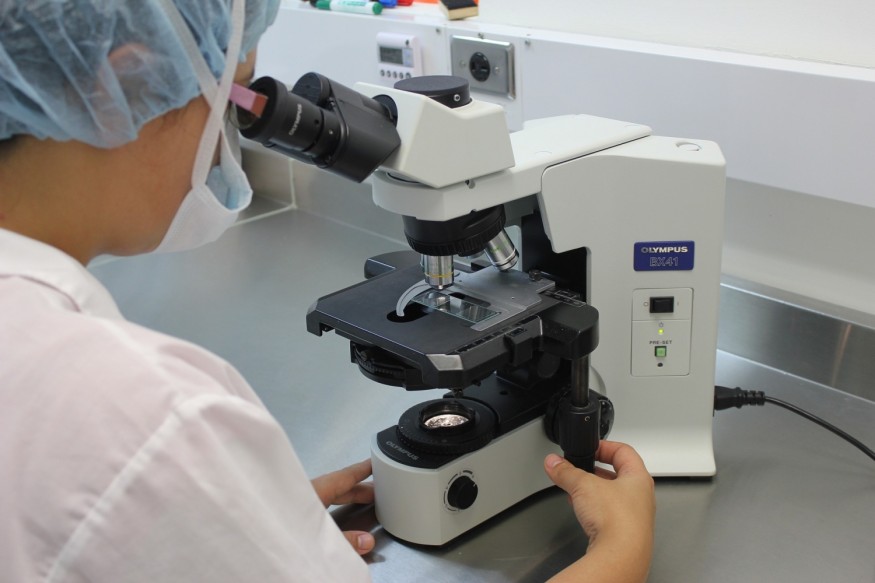Researchers from Kanazawa University developed a nanoparticle that serves as both a heater and a thermometer. When the nanoparticle is inserted into living cells, a heat spot forms that can be turned on and off to allow for the controlled modulation of nearby cellular activities.

Dye Molecule Embedded Nanoparticle
Based on the study published in ACS Nano, the nanoparticle is actually a polymer matrix embedded with a dye molecule. The scientists refer to the nanoparticle as nanoHT, which is an abbreviation of nanoheater-thermometer.
The two types of dye molecules used are called EuDT and V-Nc. The EuDT is used for sensing temperature while V-Nc is used for releasing heat. The latter occurs as a result of light being converted into thermal energy. Shining a near-infrared laser on V-Nc causes it to heat up quickly, with a stronger temperature increase occurring with higher laser power.
Fluorescence in Nanotechnology
Fluorescence dye molecules, a nanoparticle that functions as a heater and a thermometer for nano-bio applications, and fluorescence dye molecules were used by Satoshi Arai of Kanazawa University and associates to create nanoHT.
Fluorescent dyes are described as substances that strongly absorb and emit light in the visible spectrum, according to ScienceDirect. A well-known example of fluorescence occurs when the absorbed radiation is in the ultraviolet region of the spectrum, which is invisible to the human eye, and the emitted light is in the visible region.
In order to measure temperatures, a method known as fluorescent thermometry is used. Fluorescent dye molecules are used in this method, and temperature has a significant impact on how intense their fluorescence is. The dye molecules are introduced into a material of interest; detailed knowledge of the fluorescence intensity vs. temperature dependence allows inference of the material's temperature. Incident light causes the dye molecules to fluoresce. The intensity of the light serves as a gauge for the environment's temperature.
Temperature Sensing in Nanotechnology
The thermal fluorescence effect of EuDT serves as the foundation for temperature sensing. The intensity of the fluorescence decreases with increasing temperature. It is possible to measure temperature using this inverse relationship. The NanoHT's performance as a thermometer was tested by the researchers, They found out that it can measure temperatures with a resolution of 0.8 degrees Celsius or less.
According to the researchers, precise control of a single cell's activity is made possible by local heating at a subcellular scale using nanoHT. The targeted application of nanoHT, in the opinion of the researchers, has a versatile and diverse range of capabilities in regulating cellular activities that would facilitate the development of thermodynamic cell engineering.
ALSO READ : Novel Nanotechnology Can Generate Electricity Using Internal Organs of the Human Body, Replacing Batteries
Nanoparticles for Cancer Treatment
According to WebMD, chemotherapy and other medications are delivered directly to the tumor by specially created nanoparticles. Through the discovery of the new nanoparticle, such treatement could be improved.
One notable goal of the study is the heating of cancer cells to cause their destruction. In addition to the requirement for an in-tissue local heating mechanism, the ability to instantly measure the generated temperature is crucial.
With being able to heat the nanoHT, the biological processes that are temperature-sensitive can be improved as well as the ability to locally change the temperature, which offers a way to control cellular activity.
The scientists also carried out tests using HeLa cells, a kind of human cell. When they examined the effects of heating through nanoHT, they discovered that heated HeLa cells died after only a few seconds at an increase in temperature of about 11.4 degrees Celsius.
Check out more news and information on Technology in Science Times.
© 2026 ScienceTimes.com All rights reserved. Do not reproduce without permission. The window to the world of Science Times.










